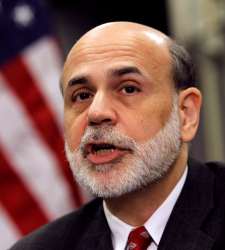
In Vietnam, the American soldiers resorted to napalm to raze everything in their path. During the financial crisis, they have fired up machines to print money for Bernanke. Has printing money worked? For now, we have avoided a new great depression. But problems persists, even though the Fed has fired all its bullets
A huge increase in liquidity has improved the markets and corporate debt, and this has also managed to devalue the dollar and improve commercial stability for the United States. Nevertheless, employment is not improving and the real estate market remains stagnant.
In addition, it is likely that Bernanke's stimulus efforts have factored in to rising raw materials prices worldwide. At this point Bernanke affirms that there is little else he can do. He will delay his quantitative easing policy (QE2) with which he would buy bonds to provide some liquidity. The problem is what will happen next.
Bernanke thinks that growth is going through a rough patch, but that it will rally in the future. Nevertheless, the outcome will depend on two factors that are out of his control.
First, the debt crisis has not been solved and citizens should still deleverage. Second, the country is also struggling to remain competitive while facing the emerging markets and, perhaps, this is a key factor that explains why unemployment is and GDP remain relatively low in the United States.
Also, the state will have to make serious adjustments to reduce its national deficit. We will not know the true situation in the United States until they use up their stimulus packages, but there is an looming suspicion that they have done all they can with their failing economy.
Edited in English by Brandon Dyches and Jose L. De Haro (joseluisdeharo@eleconomista.es)